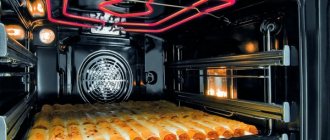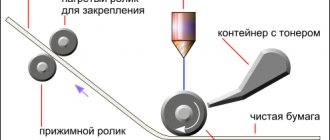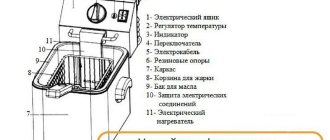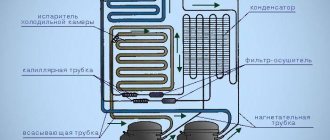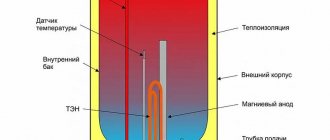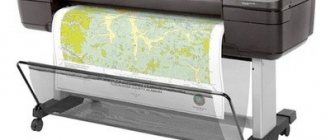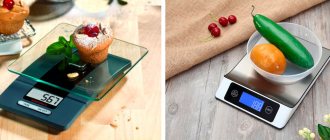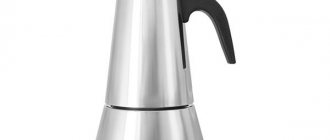Operating principle of a manual coffee grinder
During the mechanical grinding process, coffee is ground between two millstones. The grains move downwards, grinding into small particles. The millstones have a conical shape, with the inner one rotating freely around the outer one, which is rigidly fixed. To operate a mechanical coffee grinder, you twist the handle.
How to adjust grinding
Degrees of coffee grinding
By adjusting the distances between the grinders, it is easy to obtain coffee of the desired degree of grinding. How to set up a coffee grinder? In eastern models, this is done by turning the screw on which the handle is attached. In European coffee grinders, a special regulator is installed in the desired position. You can get different grinding:
- coarse - the grains are ground into a mixture similar in size to coarse salt;
- medium – finer grind (ground coffee can be compared to granulated sugar);
- extra - ground coffee resembles powder, but small grains of grains are felt to the touch.
This point is important when preparing coffee drinks. Coarsely ground grains are suitable for a French press, while small and extra grains are excellent for brewing in a Turk.
What to look for when choosing a manual coffee grinder
When choosing a unit for turning coffee beans into powder, you need to pay attention to the following nuances:
- It is very important what material the manual coffee grinder is made of. If it is made of cheap plastic or poorly processed wood, then such a product is unlikely to last long.
- When choosing a mill, you must definitely clarify what type of millstone is built into it - plane-parallel or conical. The working life of the device largely depends on this.
- Is it possible to adjust the distance between the disks? If this is not possible, then the range of possible options for brewing coffee is significantly narrowed. Each coffee recipe has its own grind. For oriental coffee, a particularly fine grind is suitable, for espresso - a coarser grind. Before making a choice, you should think carefully - are you depriving yourself of variability?
Devoid of soul, an electric device will greatly speed up the process of making coffee. But it will be a standardized drink, devoid of soul. According to true gourmet connoisseurs of the coffee drink, only a manual coffee grinder can accomplish the mystery of creating the perfect cup of coffee and fully unleash the potential of the grain of the coffee tree - its precious taste and aroma.
Types of manual coffee grinders
When choosing manual coffee grinders, two types of devices can be distinguished, depending on the type of base, the location of the handle and the material.
European
Such models are designed simply: a small cubic body, a handle (can be attached to the top or side) and a container for grains. European coffee grinders look very aesthetically pleasing and resemble an elegant wooden box. Products decorated with carvings can become a decoration for the kitchen. Suitable for preparing freshly ground coffee for literally 2-3 cups. The grinding option is stepped.
Eastern
Such devices look like a cylinder with a handle located on top. Paintings or patterns add real sophistication to the products. Oriental coffee grinders have small containers for storing ground beans. This is very convenient if in the morning you only have time to make coffee and drink. The grinding option is stepless.
How does a manual coffee grinder work?
Before using a manual coffee grinder, you need to understand how it works. It consists of two grinding surfaces: a fixed ring with small teeth tightly adjacent to each other and a millstone. By rotating the handle of the coffee grinder, you set the gears in motion, which turn the millstone. He, in turn, grinds the grain on the teeth of the wheel. The finished coffee powder falls into a special container. This is the principle on which mills operate.
Important criteria for choosing manual coffee grinders
A wide range of models of coffee grinders allows you to choose a device not only by price and appearance.
Material of manufacture
Manufacturers use different materials to make cases and containers. Steel is used to create oriental coffee grinders. The body material of European models can be: wood (beech), brass, porcelain, plastic.
The millstones deserve special attention. These details determine the lifespan of the devices and the quality of the ground coffee. Made from the following materials:
- Cast iron is an inexpensive metal that provides a long service life. However, over time, you may notice a slight metallic taste in the ground coffee. This is due to the grinding of metal elements;
- Hardened steel makes the coffee grinder reliable; metal parts do not absorb odors. However, this material wears out faster than cast iron. Firms have solved this problem - millstones are made of titanium alloy. Although such an improvement significantly increases the price of the device;
- Ceramic millstones grind grains perfectly. Unlike metal ones, they are not afraid of water and practically do not wear off. The main disadvantage is the fragility of the material, so if the coffee grinder falls, there is a high probability that the millstones will break.
Parts made from natural materials are durable, resistant to moisture and do not absorb odors. Stone millstones can grind coffee into dust. Naturally, such models are not cheap.
Functionality
The name of the device does not imply that its use is limited. A coffee grinder is excellent for grinding many products:
- Grinding various cereals allows you to obtain a fine fraction product. This is especially in demand in families with small children. By adjusting the degree of grinding, it is easy to obtain cereals ground almost into flour, which will allow you to prepare pureed porridges (corn, rice, wheat, buckwheat);
- Grinding spices at home will preserve their aroma. To do this, it is advisable to use a coffee grinder directly during the cooking process. You can grind anything: cardamom, sea salt, peppercorns, flax or sesame seeds, cinnamon;
- dried ground vegetables, fruits, berries (without seeds) will give dishes an excellent and unusual flavor.
In order for the grinding of cereals and spices to be truly high-quality, it is recommended to pre-dry the porridge and lightly heat the grains or seeds in a heated frying pan.
Important! Do not grind nuts with high fat content (walnuts, peanuts), which can clog the millstones.
Handle location
In devices, the handle is attached to the top or side. In some European models, the handle is fixed on the side of the wheel. Such mills are more stable on the table and the side handle is easier to rotate than the top handle.
In Eastern models and some European ones, the handle is located on top. A special advantage of oriental coffee grinders is that the handle can be removed and very little space is required to store the device. The grinding quality can also be adjusted using the knob.
The choice of options is a matter of taste and comfort. You need to immediately evaluate how it will be more convenient to rotate the millstone mechanism.
Containers for grains and finished powder
In all devices, the grain container is located on top. It usually holds from 10 to 100 g of coffee. Some models are equipped with special covers that muffle the noise during grinding. You can store beans in such coffee grinders, but you must keep in mind that their aroma will quickly evaporate. If coffee is often prepared for a large group, it is better to take a model with a large capacity.
In European coffee grinders, the drawers for ground grain are small (literally for 2-3 cups) and there is no special container for storing it. In eastern models, the compartment for ground grain is located at the bottom, but its size is smaller than the grain container.
The history of the manual coffee grinder!
The history of the manual coffee grinder!
For quite a long time, coffee beans were not ground at all, but were soaked or simply boiled whole. The palm in the grinding business belongs to the nomadic Arabs - the Bedouins, who were among the first to taste coffee and understand how to prepare it. They were not aesthetes or gourmets; they were quite satisfied with the rather coarse grind, which was obtained after grinding the coffee beans in a vessel with a pestle (just like in an ordinary mortar). But pounding coffee in a mortar was not an easy task: the roasted beans were both hard enough and oily enough to cope with: the work was entrusted to men, not immediately, but after training. With the advent of the Eastern tradition of making coffee (as you know, Turkish coffee requires the finest grinding, almost “to dust”), manual coffee grinders with millstone discs grinding the grains were invented and began to gain popularity. It is believed that they trace their history back to the 15th century! Manual coffee grinders can be roughly divided according to the principle of their design into five types, two of which are still “alive”, and the remaining three can only be found in museums and collections. Let's start with the “living” ones. The most famous type in our country is a hand mill, which is a square box with a rotating handle and a pull-out drawer for ground coffee. This design was more common in Europe. Sometimes the millstones are driven not just by a handle, but by a whole wheel. The funnel for loading coffee can be open or closed, which is preferable, since the beans in it are less likely to oxidize and lose their aroma. Inside the box there are two millstones grinding grains, which, using a special screw, can be brought closer to each other for finer grinding or, conversely, further away for coarser grinding. Millstones can be metal (for example, cast iron) or ceramic. The former are stronger, and the latter are more careful about the taste of the grains, since they heat up less during the grinding process and are completely inert, that is, they do not enter into a chemical reaction with the grains. Due to its cubic shape, it is difficult to hold this coffee grinder with one hand while twisting the handle with the other. The finer the grind, the more the body moves across the table. Previously, such coffee grinders were even mounted on tables or kept on laps. Nowadays they are bought not so much for grinding, but for decoration. Turkish coffee mills and, in general, manual coffee grinders of eastern origin are arranged somewhat differently. The internal mechanism in them is approximately the same as that of “boxes”, but the body has a narrow cylindrical shape. Its inventor, of course, had not heard of the now fashionable word “ergonomics,” but this is precisely the quality that such coffee grinders can boast of. They often have a folding or even removable handle that can be stored inside the case (for example, when transporting). Such coffee grinders, as a rule, have no equal in the matter of the finest grinding, although the degree of grinding of the grains can be chosen. The ability to turn the handle with one hand and firmly hold the mill body with the other. It is believed that with high-quality assembly and good millstones, these mills have no equal in grinding. Such mills are usually designed for a small portion of coffee (25–35 g). Coffee grinders and meat grinders with wall mounting (the grinding mechanism is driven by a rotating handle). From above and below - along a funnel, grains are poured into one, and dishes or a bag for ground coffee are placed under the other. Now wall-mounted coffee grinders are also used - in cafes and shops. Instead of a handle, they have a power button: once - and you're done! “More than a billion people drink Brazilian, Turkish, American, Italian, etc. coffee every day. What your coffee will be brewed in depends on the specific recipe. This can be a professional coffee machine (the coffee is ground by a professional “barista”) or an automatic machine (the coffee is grinded and brewed automatically). You can also brew it in a Turkish coffee maker, in a geyser or drip coffee maker, or brew it in a French press. What grinding method should you choose: a rotary coffee grinder, a millstone, or maybe use a “grandmother’s” one, a manual one? The body of the manual coffee grinder has built-in millstones, which, rotating towards each other, grind the coffee grain into small particles (fractions). Working manually, it is impossible to achieve an even grind or adjust the coffee grinder to stable fractions, which negatively affects the taste and aroma of the drink. Millstone electric coffee grinders, on the contrary, can be set to coarse or fine grinding with a stable fraction (the more stable, the higher the quality of the drink). This grinding option is suitable for preparing a drink in geyser-type coffee makers or a French press. Every barista knows that grinding is of great importance, and different fractions can give both positive and negative results, and an illiterate approach to this issue can ruin the entire drink. In rotary coffee grinders, coffee beans are broken by blades that rotate at high speed. This fraction can easily be compared to dust, and this type of coffee is best brewed in a Turk on a stove or in a special device for making oriental coffee, where the Turk is heated in the sand. Having brief information about the methods of grinding coffee beans, we can conclude which coffee grinder is suitable for which type of brewing: A manual coffee grinder is an unstable fraction, with optimal use in a French press. An electric burr grinder is the most optimal for use in both professional and household coffee machines. Rotary electric coffee grinder – grinds beans into “dust”, and such grinding is only suitable for making oriental (Turkish) coffee.”
Which coffee grinder is better - manual or electric?
When comparing devices, attention is paid not only to the grinding quality. It is important to know the pros and cons of electric and manual models.
Thanks to electric coffee grinders, grinding time is significantly saved. Using the device is easy and convenient, and retail chains offer a wide range of products (prices, sizes, designs). The disadvantages include the need for a power source and the lack of adjustment of the grinding level. Powerful units heat up the grains during operation and this can cause the drink to become bitter.
When using manual devices, it is easy to get coffee of the desired grind, the beans do not overheat and the drink does not taste bitter. The devices operate quietly, do not require electricity, are reliable and safe. Negative qualities: obtaining a ground product requires time and manual labor. It is not always possible to immediately adjust the desired grinding level.
The choice of device is also influenced by the rhythm and lifestyle of the buyer, his habits. If you like to quietly enjoy a fragrant cup of coffee, a manual model will give you such pleasure. Energetic people who receive many guests should give preference to electric units.
How to choose a burr coffee grinder: selection criteria
Before purchasing such a valuable kitchen assistant, you should pay special attention to the main selection criteria that will help you navigate among the wide range of coffee grinders in favor of the device that is optimal for you.
Type and material of millstones
Devices with a conical mill disk, despite their high cost compared to analogues, are more durable. In addition, the resulting coffee powder will not have any off-flavors typical of grinding through cylindrical millstones. The mechanism is made of wear-resistant materials such as stainless steel, stone or ceramics.
Important! The efficiency of a coffee grinder and its active service life directly depend on the quality of the raw materials used to produce the millstones.
The grinder, made of steel, can process up to 500 kg of coffee beans. For ceramic models, this figure is twice as large – 1000 kg. When choosing a burr coffee grinder, you should also take into account that the ceramic disc does not become saturated with foreign odors during operation and allows you to achieve high homogeneity of the finished product.
Adjusting the grinding degree
All coffee grinders have a practical option for adjusting the degree of grinding: the user independently sets how large the particles of the finished powder will be. The functionality of standard devices includes from eight to sixteen grinding levels. In most cases, the size of crushed grains is determined by the distance between the mill discs: the larger it is, the coarser the texture of the processed ingredients. You can adjust the optimal size using the outer ring located on the base of the appliance bowl.
Reference! The degree of grinding of coffee beans is entirely individual. If you prefer a drink prepared in a French press, medium-sized particles are ideal. For aromatic Turkish coffee you will need the finest powder. In the case of espresso, it is better to opt for medium or fine grind components.
Containers for beans and freshly ground coffee
An important detail of a burr coffee grinder is the dimensions of the grain bowl and container for the finished coffee mixture. The capacity of an average container varies in the range of 250-300 grams. Depending on the material used, glass, polymer and metal products are distinguished.
The first option is especially practical, since glass does not absorb third-party odors and retains the natural aroma of freshly ground beans. Such bowls are quite easy to care for, and their few disadvantages include only fragility.
Power
This indicator is not key, since all coffee grinders, regardless of the principle of operation, one way or another effectively cope with grinding ingredients. Depending on the model of the device, its performance can vary between 100-600 W, however, for home use, the optimal choice is devices with a power of 160-200 W.
Rules for caring for a manual coffee grinder
It is not recommended to wash coffee grinders under water, especially with cleaning agents. For exterior cleaning of wooden cabinets, it is better to use wood cleaners.
Advice! If the steel case is very dirty, wipe the stains with napkins moistened with detergents (without abrasive additives). Then the device is thoroughly wiped dry. It is recommended to clean rust with a special composition.
Over time, an oily coating accumulates on the inside walls of coffee grinders. It is advisable to wipe containers for beans and ground coffee with dry wipes.
To clean the millstones, experts advise using rice, which perfectly absorbs oily deposits and eliminates odors. A small amount of grains is poured into a container and ground. To prevent leftover rice from getting into the drink, the first portion of ground coffee is thrown away.
What is a manual coffee grinder?
A manual coffee grinder consists of two millstones, the distance between which is changed using a screw. The more it is twisted, the smaller the gap between the millstones and the finer the grind.
To grind coffee in a manual coffee grinder, pour whole beans into the compartment on top. Rotate the handle until all the grains are ground between the millstones. The ground coffee will fall into a special compartment.
A manual coffee grinder is not an anachronism; it has many advantages:
- Size . It can be easily put away in a closet or drawer when not needed.
- Autonomy from the network . No need to look for a free outlet.
- Simple device . The simpler the device is, the less likely it is to break.
- Uniform grinding . Millstones grind grains evenly without overheating them. In addition, you can adjust the grind level by changing the distance between the burrs using the adjusting nut.
- Low noise level compared to electric ones.
And manual coffee grinders look very elegant!
The main disadvantages of such a device are the need for physical effort and time. To get 1 shot of espresso, you need to rotate the knob for about 2 minutes. If you want to brew another cup, you will need to empty the container for ground coffee, add the beans again and twist for another 2 minutes. Conclusion: a manual coffee grinder is a so-so option if you are in a hurry or want to make coffee for a large group.
Review of popular manufacturers
Among the variety of models, there are several manufacturers of the best manual coffee grinders:
- Bekker - produces European coffee grinders. The retro-style model looks stylish, in which the grain container and the side handle in the form of a wheel are made of cast iron. And the millstones are metal-ceramic. Products with a wooden box and ceramic millstones are also in demand. The volume of the container for grains is 30-40 g.
- TimA offer European-style mills with a more modern design. The wooden box looks harmonious with the metal dome-shaped funnel. The size of the box for grains is 40 g. The company also offers products of oriental type: the cylindrical metal body is decorated with elegant oriental ornaments. Capacity for grains – 30 g.
- Mayer&Boch offer a product with a wooden-ceramic body and a steel funnel for coffee beans (capacity 50 g). Thanks to the wide base, the model is stable and easy to use.
- Tescoma has released a cylindrical model with a modern look, assembled from metal and plastic. Thanks to the marks on the special cup, it is easy to keep track of the amount of ground coffee received (for 1,2,3,4 cups).
Manufacturers offer a wide range of coffee grinders. When choosing a manual device, you need to focus on the material of the millstones, the aesthetic qualities of the case and the comfort of using the device.
A little history
The birth of the electric coffee grinder was noted in history on April 3, 1829. On this day, James Carrington received a patent for his electromechanical invention. Until this point, grinding coffee was done manually, using a manual coffee grinder. Its structure was a smaller copy of a mill, and the crushing of coffee beans occurred by grinding them between two millstones. With the use of an electric motor, two designs of coffee grinders appeared. One uses the same traditional millstones, and this type is called a millstone. In another, the role of the grinder was taken on by metal knives rotating at high speed and therefore the coffee grinder is called a rotary grinder.
The burr type of coffee grinder consists of three sections. Whole grains are poured into one. In the second, they are ground and independently poured into the third section in the form of a ready-to-use powder.
Video: how a millstone coffee grinder works
Photo: types of coffee grinders
A rotary coffee grinder has one section in which the loaded beans are ground through a crushing mechanism and poured out manually.
Crush grains with metal knives
Grinds coffee with metal or ceramic burrs
Driven by hand power
In addition, a modern coffee grinder is equipped with additional systems that allow you to use the machine’s capabilities more productively.
— Blocking the engine from starting when the cover is open.
Prevents grains from scattering when you try to turn on the motor with the lid open or not tightly closed. As a rule, all coffee grinders are equipped with this function. Blocking is especially important in rotary devices.
— Engine overheat protection.
Automatic motor shutdown when overheating. This function significantly extends the life of the unit.
— Pulse mode.
A very useful mode for crushing especially hard products. For example, when grinding dried rose hips or hawthorn berries before brewing. It consists in the fact that engine operation alternates with short pauses, during which the speed of rotation of the working shaft decreases.
— Timer.
Using a timer in rotary coffee grinders, the degree of grinding is regulated. The longer the grinding process lasts, the finer the outgoing product becomes.
— Grinding depth regulator.
Typically used in burr coffee grinders. Adjustment is carried out by decreasing or increasing the gap between the millstones. Numerous recipes for preparing coffee drinks are based specifically on different fractions of ground coffee beans.
So, for example, to prepare coffee in a Turk (cezve), you need the finest grinding “to dust”. For brewing coffee, espresso is slightly coarser, and for brewing in a French press, the coarsest grind is used. In total, specialists have up to 25 degrees of coffee grinding.
Equipping a coffee grinder with an electric motor has greatly facilitated the work of a housewife, since grinding coffee beans by hand is a rather tedious task.
The power of the coffee grinder plays an important role in the process of processing coffee beans. The higher the power, the higher the performance of the device. Typically it varies from 80 to 170 W. On the housing, the power is indicated on a plate describing the technical characteristics of the electric motor. The plate is glued or riveted to the bottom of the device.



